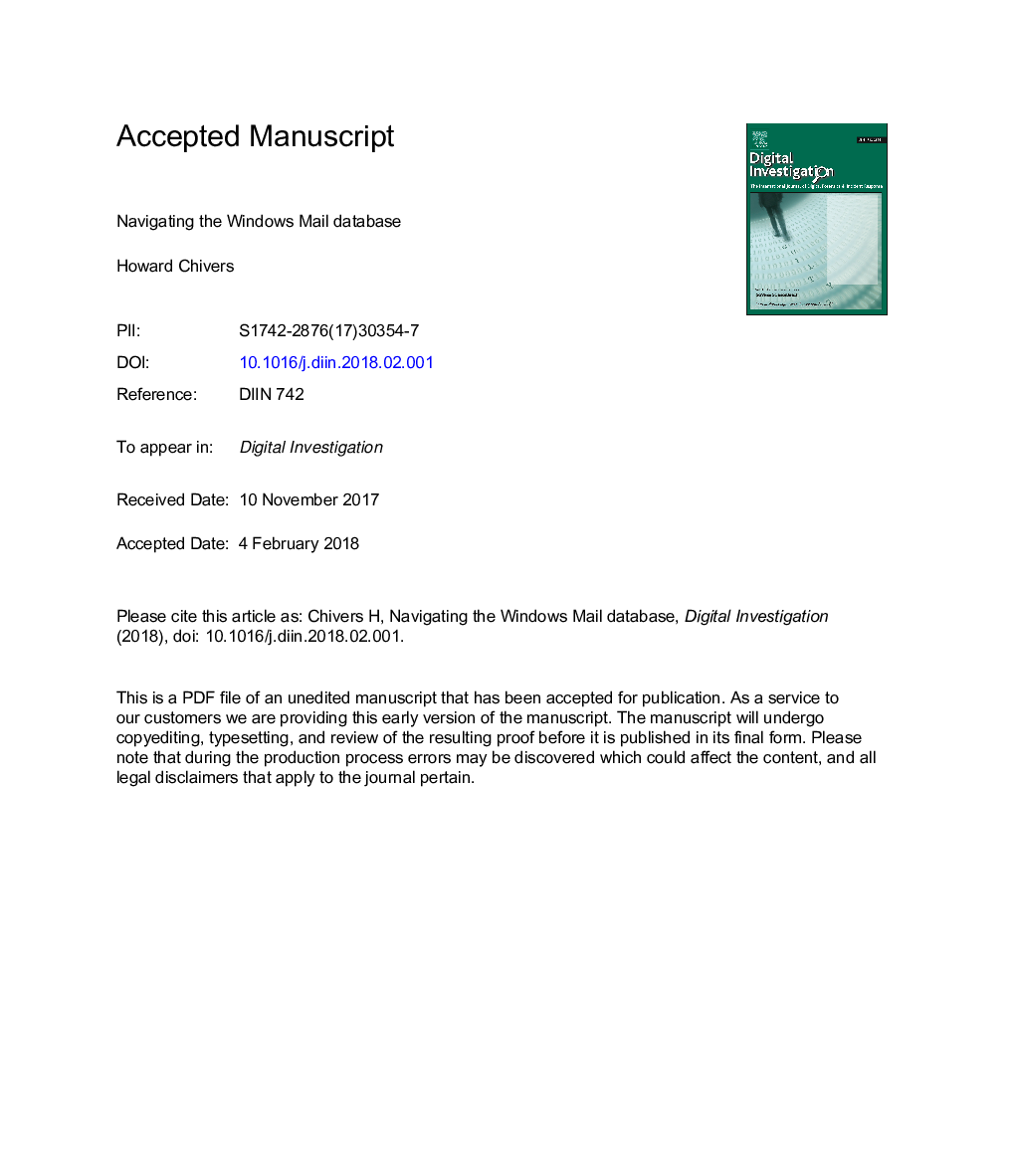| Article ID | Journal | Published Year | Pages | File Type |
|---|---|---|---|---|
| 10225799 | Digital Investigation | 2018 | 23 Pages |
Abstract
The Extensible Storage Engine (ESE) database is used to support many forensically important applications in the Windows operating system, and a study of how ESE is used in one application provides wider insights into data storage in other current and future applications. In Windows 10, Windows Mail uses an ESE database to store messages, appointments and related data; however, field (column) names used to identify these records are hexadecimal property tags, many of which are undocumented. To support forensic analysis a series of experiments were carried out to identify the function of these tags, and this work resulted in a body of related information about the Mail application. This paper documents property tags that have been mapped, and presents how Windows Mail artifacts recovered from the ESE store.vol database can be interpreted, including how the paths of files recorded by the Mail system are derived from database records. We also present examples that illustrate forensic issues in the interpretation of email messages and appointment records, and show how additional information can be obtained by associating these records with other information in the ESE database.
Related Topics
Physical Sciences and Engineering
Computer Science
Computer Networks and Communications
Authors
Howard Chivers,
